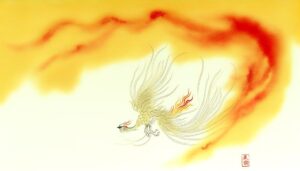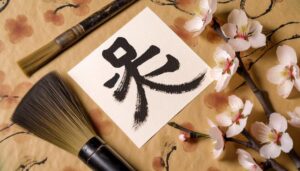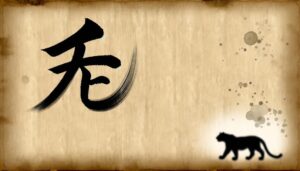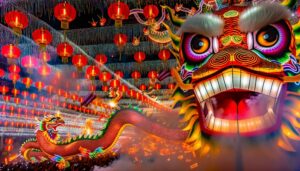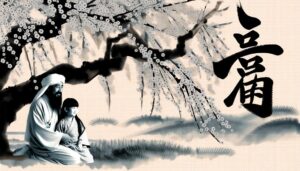What Is the Chinese Symbol for Eternal Love?
The Chinese symbol for eternal love combines characters that embody profound cultural and philosophical undertones. The character '永' (yǒng) symbolizes eternity, while '爱' (ài) signifies deep emotional commitment.
These symbols trace their origins to early dynasties and are linked to Confucian ideals of loyalty and familial harmony. They manifest in various calligraphy styles, each with its own artistic and historical significance.
Modern uses of these symbols span digital art, fashion, and home decor, reflecting their timeless appeal and resonance. Exploring these symbols reveals a tapestry of cultural heritage, romantic meaning, and contemporary relevance.
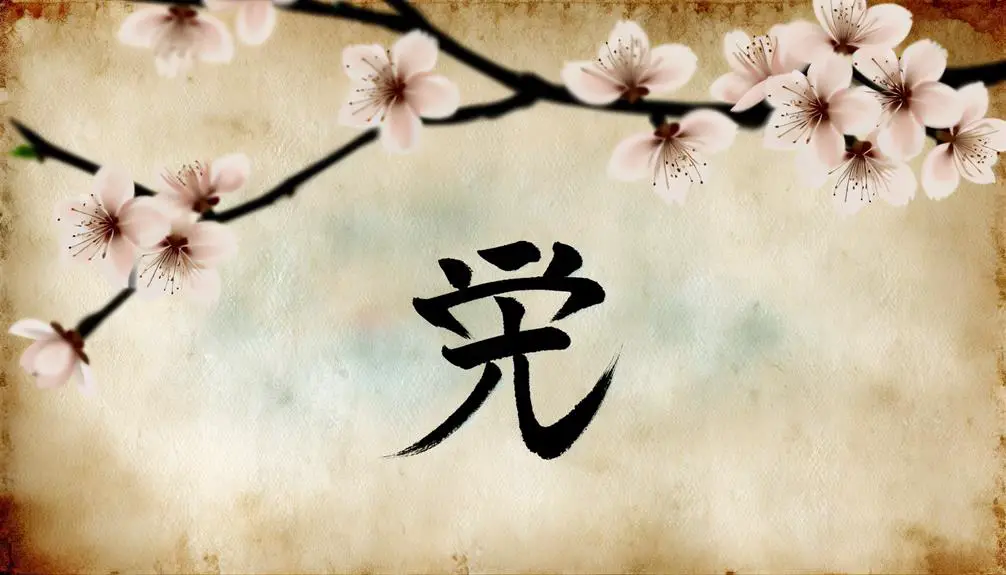
Key Takeaways
- The character '永' symbolizes eternity and can represent everlasting love in Chinese culture.
- The symbol '爱' translates to love and indicates deep, emotional commitment.
- The double happiness symbol '双喜' often represents matrimonial joy and lasting affection.
- Calligraphy styles like Seal Script and Cursive Script visually express the timeless nature of love.
- Modern expressions include digital art, fashion, and tattoos, conveying permanent and eternal love.
Historical Origins
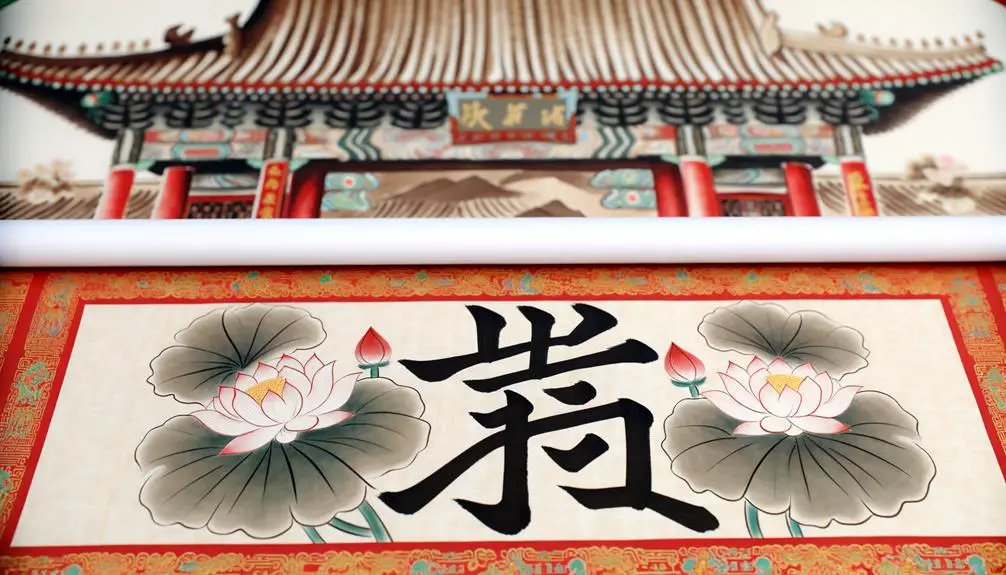
Rooted in ancient Chinese culture, the symbol for eternal love has evolved through millennia, intertwined with the rich tapestry of Chinese philosophy, mythology, and artistic expression.
The origins can be traced back to early dynasties where love and unity were fundamental to societal and familial structures. Ancient texts, such as the 'I Ching' (Book of Changes), provide philosophical underpinnings that reflect the enduring nature of love.
Mythological tales, such as that of the Weaver Girl and the Cowherd, further enrich this symbol, embedding it in the collective consciousness.
Additionally, motifs found in traditional Chinese art, ceramics, and carvings often depict intertwined symbols, emphasizing continuity and eternal bonds. These historical roots laid the foundation for the profound cultural significance of eternal love in China.
Symbolism and Meaning
How does the Chinese symbol for eternal love encapsulate the profound cultural values and philosophical beliefs inherent in Chinese tradition? Rooted in Confucian ideals and Daoist harmony, this symbol embodies the timeless essence of love and unity. It signifies:
- 永 (Yǒng): This character represents eternity, reflecting the enduring nature of love.
- 爱 (Ài): Symbolizing love, it conveys deep emotional and moral commitments.
- 双喜 (Shuāngxǐ): Often associated with matrimonial joy, it highlights the importance of mutual happiness.
- 和谐 (Héxié): Denoting harmony, it emphasizes balance and mutual respect in relationships.
Through these elements, the symbol for eternal love serves as a profound cultural artifact, bridging ancient philosophical thought with contemporary values, and fostering a holistic understanding of enduring affection.
Calligraphy Styles
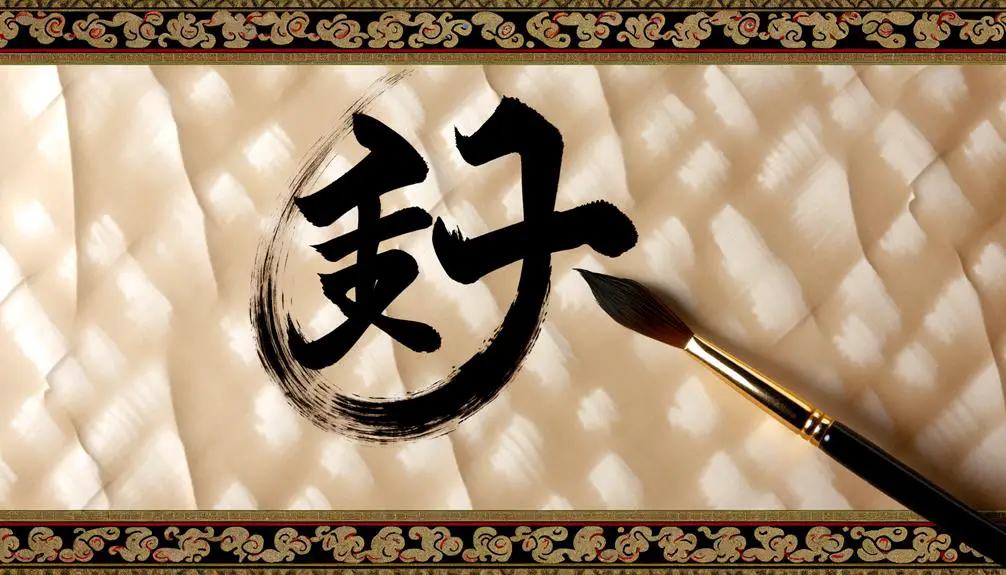
The profound symbolism of the Chinese character for eternal love is further enriched by the diverse calligraphy styles that have evolved over centuries, each adding layers of aesthetic and cultural nuance to its representation. From the fluid grace of Cursive Script to the structured elegance of Regular Script, each style offers a distinct visual and emotional experience. Calligraphy, an esteemed art form in Chinese culture, allows the character for eternal love to transcend mere words, becoming a living embodiment of timeless affection.
| Calligraphy Style | Characteristics |
|---|---|
| Seal Script | Ancient, formal, pictographic |
| Clerical Script | Broad strokes, horizontal |
| Regular Script | Clear, structured, balanced |
| Cursive Script | Fluid, expressive, dynamic |
These styles provide unique avenues to explore the depth of eternal love.
Modern Expressions
In contemporary times, the Chinese symbol for eternal love has found new life in various modern expressions, ranging from digital art to fashion, reflecting its enduring significance and adaptability. This ancient emblem has seamlessly integrated into contemporary culture, showcasing its timeless appeal.
Its applications in modern contexts include:
- Digital Art: Artists incorporate the symbol into digital creations, blending traditional aesthetics with cutting-edge technology.
- Fashion: Designers often use the symbol in apparel and accessories, symbolizing lasting affection and style.
- Tattoo Art: The symbol is a popular choice for tattoos, representing a permanent bond.
- Home Decor: Incorporating the symbol in interior design elements, it adds a touch of cultural heritage and romantic meaning.
These modern expressions highlight the symbol's continued relevance and cultural resonance.
Cultural Significance
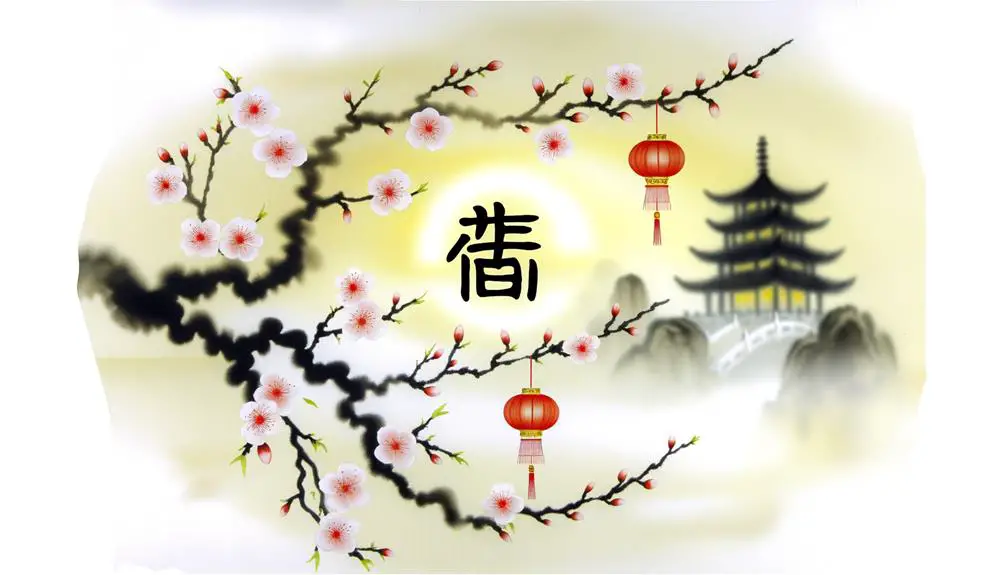
Rooted in ancient Chinese philosophy and aesthetics, the symbol for eternal love embodies profound cultural significance, reflecting concepts of loyalty, harmony, and enduring commitment.
This emblem, often depicted through intricate calligraphy or intertwined motifs, resonates deeply with Confucian ideals of familial piety and marital fidelity.
In Chinese culture, relationships are viewed not merely as personal bonds but as integral components of social stability and moral order.
The symbol's aesthetic forms are imbued with Daoist principles of balance and unity, signifying a harmonious blend of yin and yang.
As a cultural artifact, it transcends mere decoration, serving as a potent reminder of the timeless values that underpin Chinese society, reinforcing the importance of lasting devotion and interconnectedness.
Conclusion
The Chinese symbol for eternal love, with its deep historical roots and intricate calligraphy styles, serves as a timeless bridge connecting past and present.
This emblem, rich in symbolism and cultural significance, is akin to a delicate thread woven through the tapestry of human emotion and tradition.
Modern expressions continue to breathe life into this ancient motif, ensuring its perpetuity in the cultural consciousness, much like an undying flame illuminating the path of love across generations.

